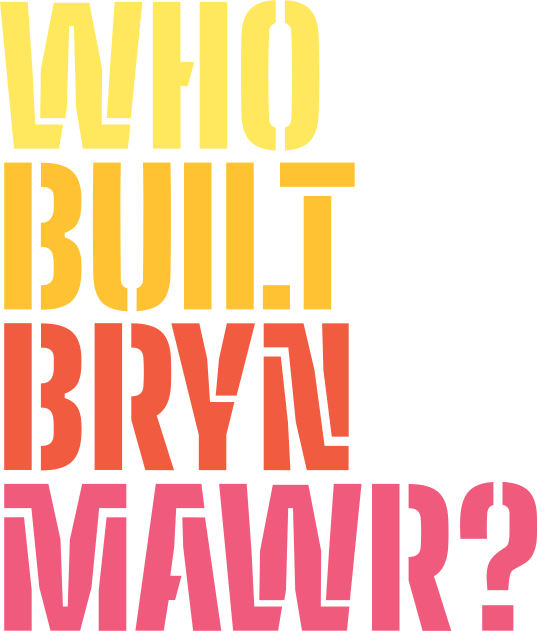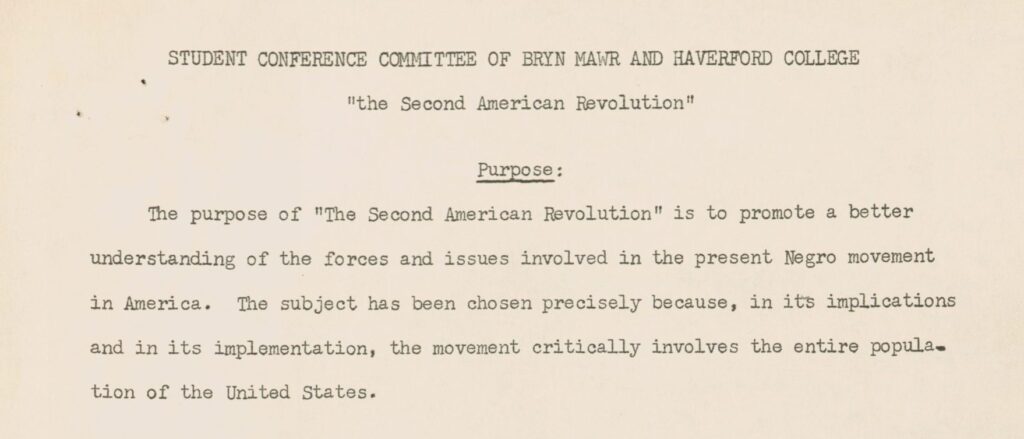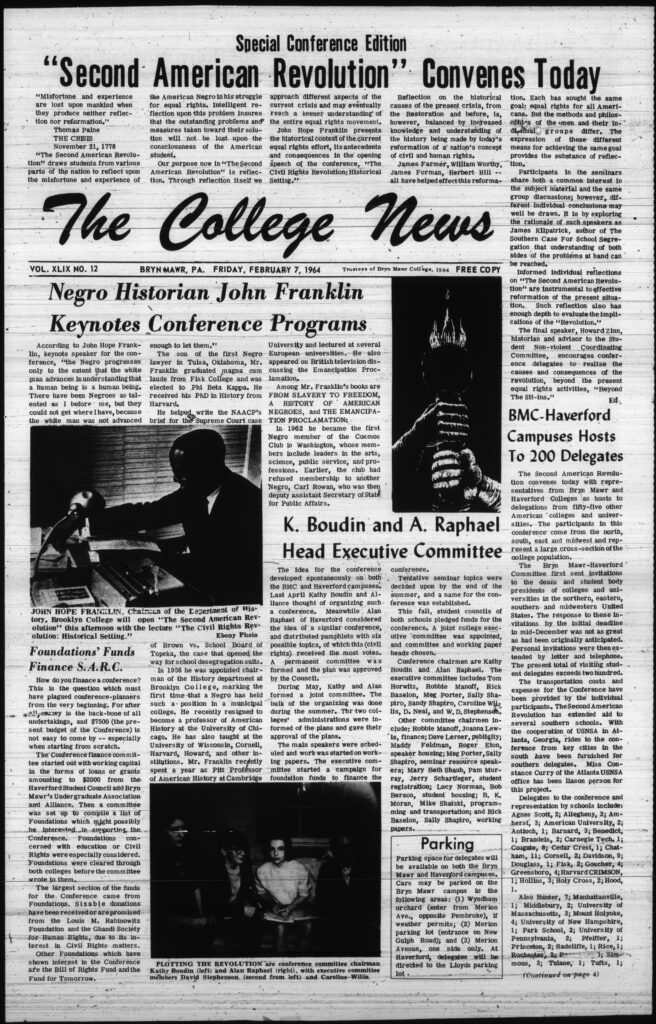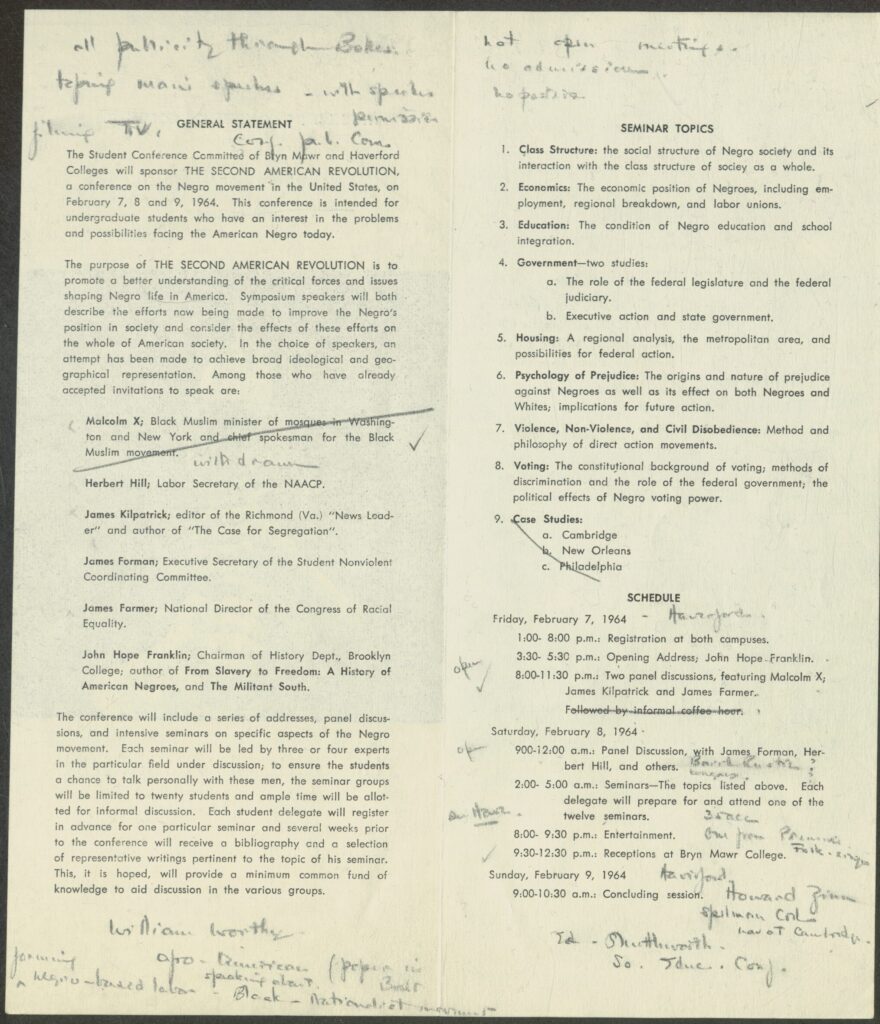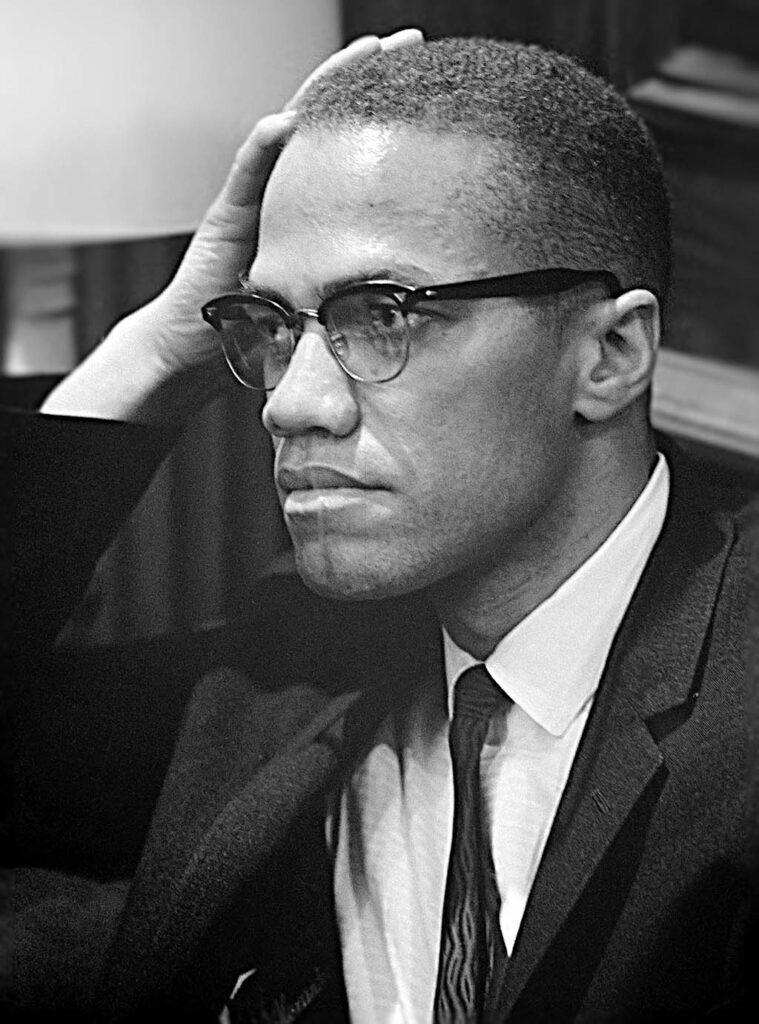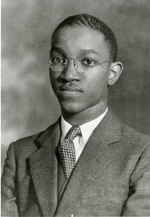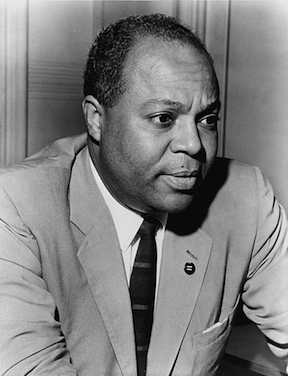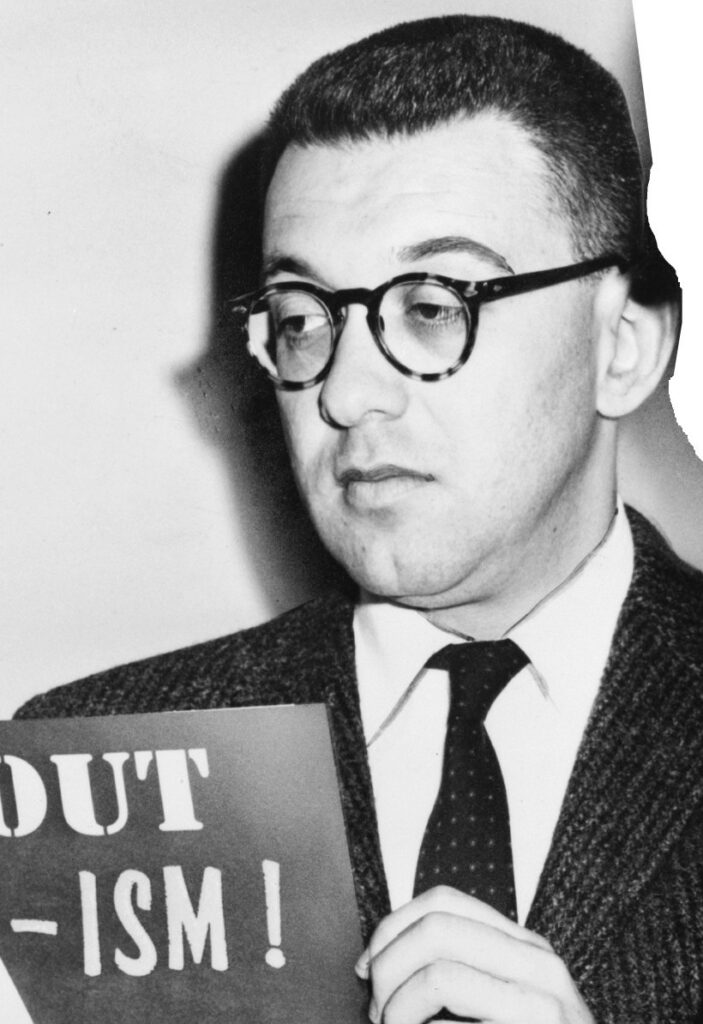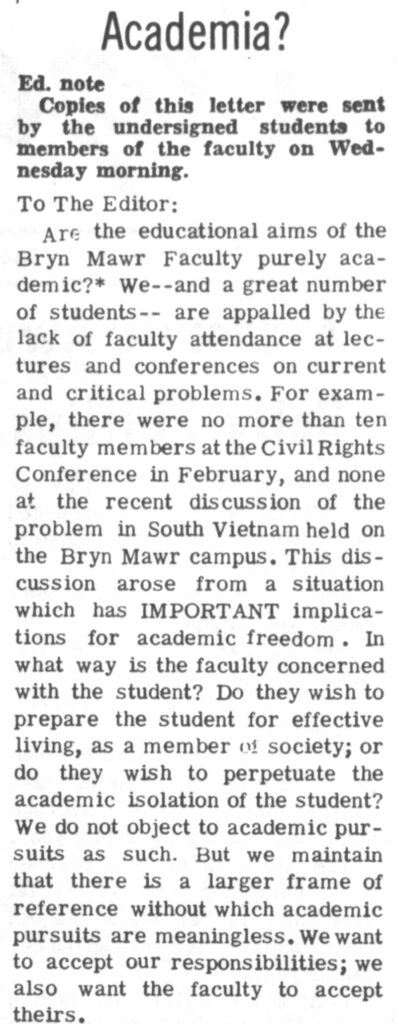The Second American Revolution Conference (February 7-9, 1964)
In 1964, students organized The Second American Revolution Conference at Bryn Mawr College, bringing together over 200 delegates from colleges across the country and featuring nationally recognized civil rights activists. The conference was considered a profound success by the students, faculty, and administrative members involved due to the massive turnout and the conversations and ideas that were fostered. Though the continuation of Bryn Mawr’s racist history cannot be denied, this impressive event was one vehicle through which the radical spirit of the 1960s played an integral role in changing the culture of the college and demonstrated the possibility for student-led initiatives to engage the campus with the national conversation on race.
“The subject has been chosen precisely because it critically involves the entire population of the United States both in its implications and implementation.”
From an undated letter from the Conference Committee of Bryn Mawr and Haverford Colleges
Program of Events
The Speakers
“Of prime importance was bringing to the College people active in civil rights, in order to make the conference less academic, more vitally concerned with real issues and problems.”
C. Brooks Robards, Alumnae Bulletin, Spring 1964
The Student Organizers
“The task of organizing a conference which could both inform the students and stimulate them to think and act in the cause of civil rights was a great one.”
Alumnae Bulletin, 1964
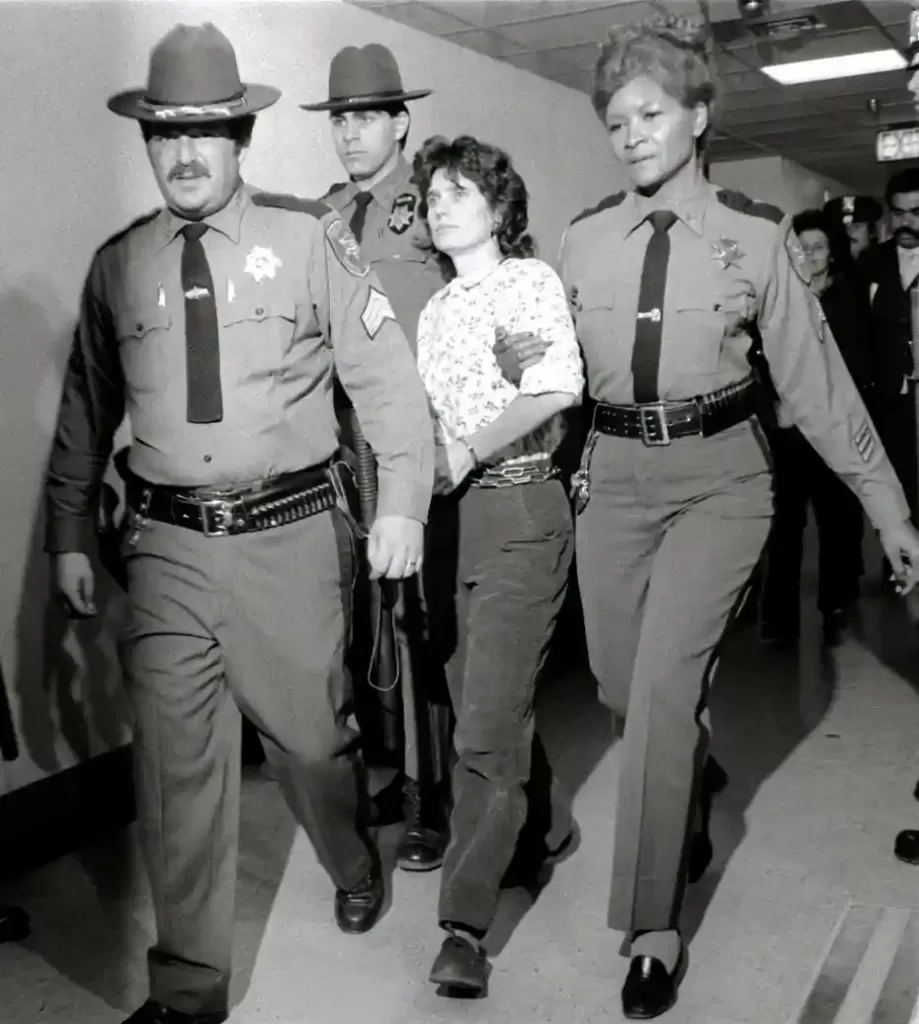
The Second American Revolution Conference was organized by over 20 students who headed the Student Conference Committee of Bryn Mawr and Haverford Colleges. Kathy Boudin (Class of 1965), Alan Raphael (HC Class of 1966) acted as chairs of the committee and head organizers.
Kathy Boudin (Class of 1965, pictured) was active in social justice work on campus organizing events on behalf of the political Alliance club. After graduating, she was involved with the Weather Underground, a radical left-wing effort to dismantle the U.S. government in response to its racist and classist policies. In 1981, while aiding the Black Liberation Army, Boudin was involved in an armed robbery that resulted in the death of three people. Boudin was convicted of felony murder and was imprisoned until 2003. She is now a professor in the Columbia University School of Social Work.
Alan Raphael (HC, Class of 1966) became a professor of law and social justice at Loyola University Chicago
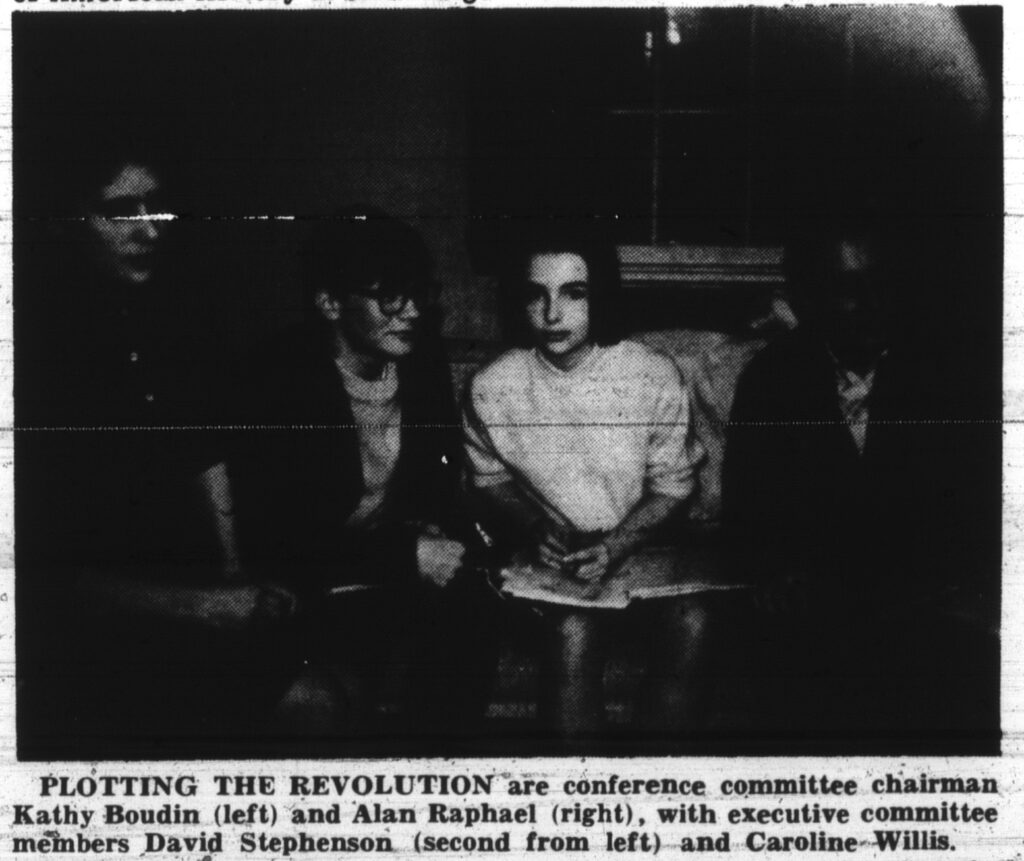
Nearly all the conference’s organizers were white. While this was due in part to the low enrollment of Black students at both colleges, it is nonetheless an important aspect of the conference to examine critically. The abolition of legal segregation was underway in 1964, but the culture of America had not yet changed. The Conference occurred at a pivotal moment in the movement, before the transition from the earlier phase of the civil rights movement to a primarily Black-led movement influenced by the Black Power rallying cry of the late 1960s.
Response and Legacy of the Second American Revolution Conference
“It’s all very well to have a conference like this and sit around and learn about Civil Rights, but that doesn’t make people do something about it.”
James Forman, Executive Secretary of the Student Non-Violent Coordinating Committee (SNCC)
Prior to the conference, there were few examples of student involvement with the Civil Rights movement. That spring, four students had been arrested for protesting unequal school facilities in the neighboring city of Chester. But much of the student body population was indifferent to the movement, at best, and against it entirely, at worst. While there is no documentation of administrative resistance to the conference, the prevailing culture of white supremacy and racism at the College would have been a significant roadblock in and of itself.
An unexpectedly large percentage of the student body was involved in the conference as organizers or attendees. And just three days after the conference, its impact on students’ activism was immediately apparent. The Alumnae Bulletin reported that the number of students picketing in Chester grew to “nearly 30,” and that almost the same number “went to a meeting of the Student Nonviolent Coordination Committee to find out how they could take positive action to help eliminate unequal treatment of Negroes” [Alumnae Bulletin, Spring 1964).
This trend of organized student-led activism has since been a recurring theme in Bryn Mawr’s history. From protests against the Vietnam War to 2014’s “die-in” following the murder of Michael Brown to the 2020 Bryn Mawr Strike, many Bryn Mawr students have exhibited their passion for equal rights and their anger towards injustice both on and off-campus.
“The conference held by the Conference Committee of both colleges was a great success as a conference. It has been so well reported, both by the College News and by Philadelphia and New York papers, that I shall not give an account of it in this report. The students are considering further evaluation of the Conference and its continuing effect. That we shall send to the board if prepared.”
Board of Trustees Notes, 1965—Second American Revolution Notes
Explore the Timeline for the Entire Exhibition
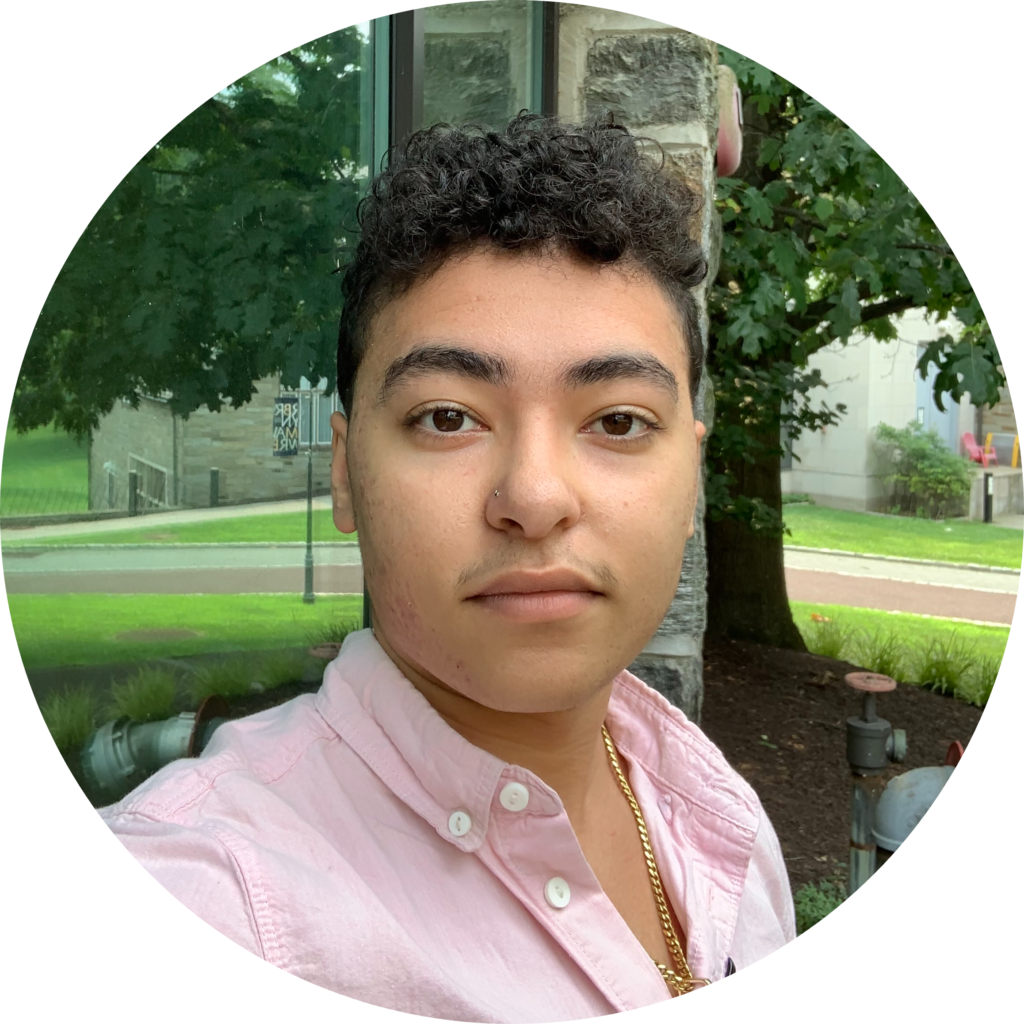
About the Curator
Elliot Fleming (Class of 2021)
What drew you to this topic?
While looking through Bryn Mawr’s archives from the time period, the fact that I had not heard of this massive student-led conference struck me. If I didn’t know about it, how many others did not either? I chose to focus on this event to illustrate the power of student initiative.
